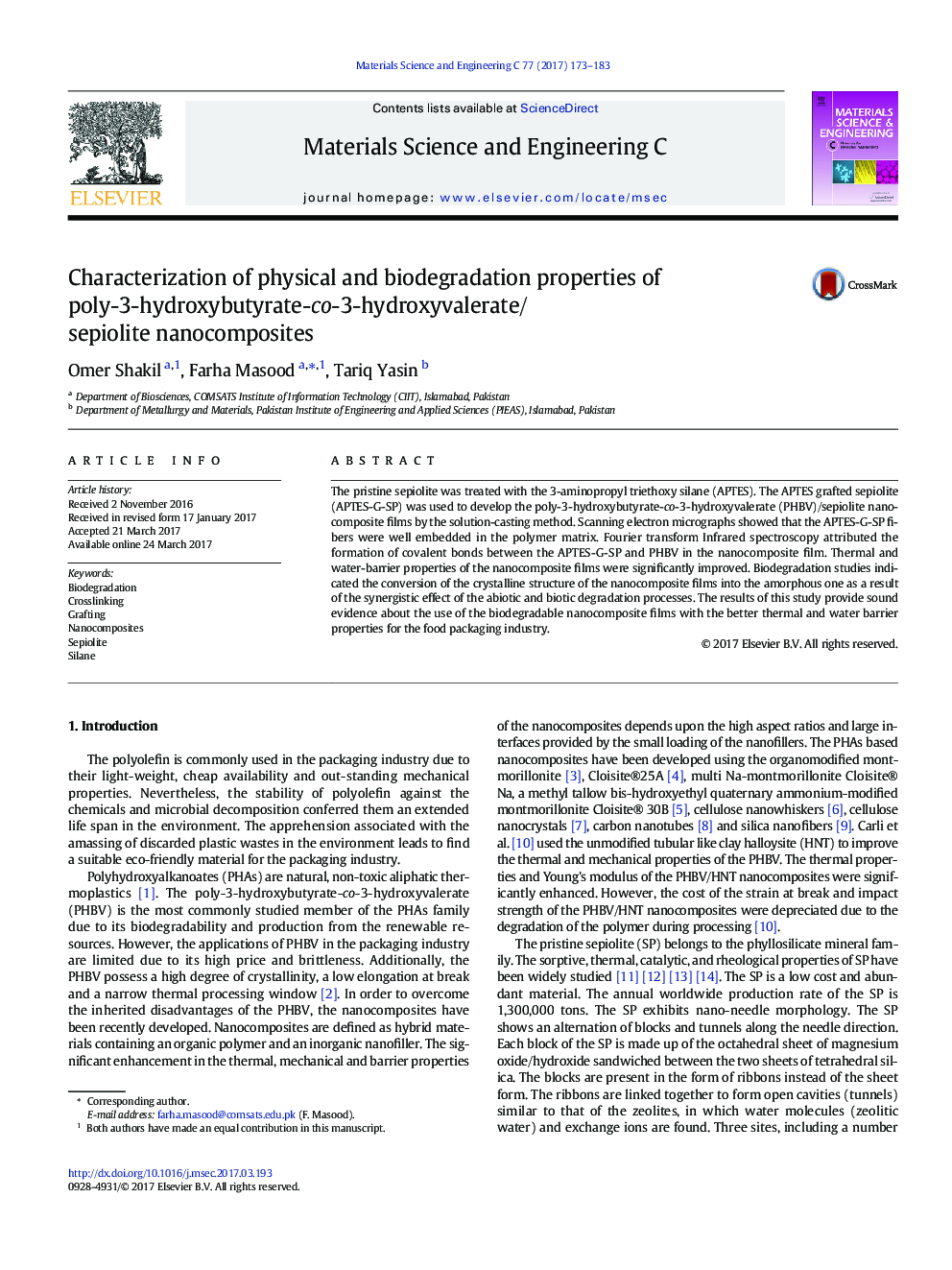| Article ID | Journal | Published Year | Pages | File Type |
|---|---|---|---|---|
| 5434513 | Materials Science and Engineering: C | 2017 | 11 Pages |
â¢APTES was used as a cross-linking and compatibilizing agent.â¢The surface grafting of sepiolite was done by using APTES.â¢PHBV/SP nanocomposite films were prepared by the solution-casting method.â¢Thermal and water-barrier properties of nanocomposite films were improved.â¢Silane grafting did not affect the biodegradability of PHBV in the nanocomposite films.
The pristine sepiolite was treated with the 3-aminopropyl triethoxy silane (APTES). The APTES grafted sepiolite (APTES-G-SP) was used to develop the poly-3-hydroxybutyrate-co-3-hydroxyvalerate (PHBV)/sepiolite nanocomposite films by the solution-casting method. Scanning electron micrographs showed that the APTES-G-SP fibers were well embedded in the polymer matrix. Fourier transform Infrared spectroscopy attributed the formation of covalent bonds between the APTES-G-SP and PHBV in the nanocomposite film. Thermal and water-barrier properties of the nanocomposite films were significantly improved. Biodegradation studies indicated the conversion of the crystalline structure of the nanocomposite films into the amorphous one as a result of the synergistic effect of the abiotic and biotic degradation processes. The results of this study provide sound evidence about the use of the biodegradable nanocomposite films with the better thermal and water barrier properties for the food packaging industry.
Graphical abstractDownload high-res image (115KB)Download full-size image
